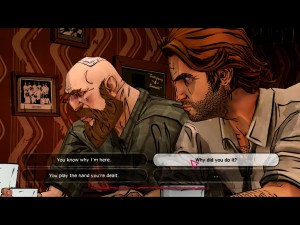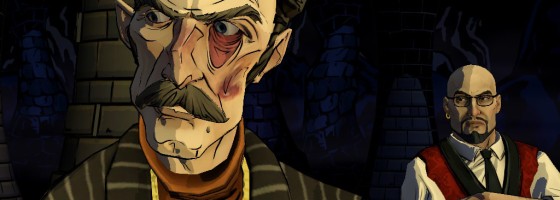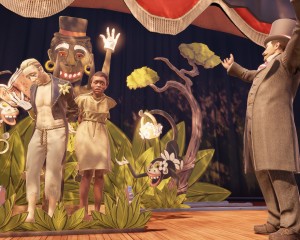I’m probably going to get yelled for this, but I find that storytelling in video games has always been and continues to be horrible. Even as technology has improved and we have seen the growth of the medium, I’ve yet to find a game where the story has hooked me from beginning to end.
When I think about it further, some games have gotten close, but none have managed to get it all right, and this has to do with several elements that the video game medium is weak around.
Before we begin talking about this, it’s important to point out that I’m excluding games that have no vocals or are meant to be throwbacks to retro games. The reason is that these titles were limited by the technology and not meant to give a cinematic experience to the player. With that said, let’s talk about the camera.
The Camera:
There are a lot of parts that go into making a story compelling for the audience, and the first one is the camera. If you’ve watched any movie or TV show, you know that the camera never stays perfectly still. The reason is that it’s very awkward to just stay on a few preset viewpoints for an entire conversation.
Cinematography is such an underrated part of good storytelling when it comes to any visual storytelling medium. Hideo Kojima was one of the first developers to explore the use of cinematography with the Metal Gear series. Granted, it was basic 3D at the time, but we had the camera actually try to engage the audience with what’s going on.
Effective cinematography can also be seen in the horror genre. The best horror movies manage to give the viewer omniscient views, while still framing the scenes in a way to surprise them.
Too often, we see developers have a static camera that simply cuts between the people talking. In fact, we could call this the “Bioware Problem,” as every one of their games has had this. For first person games, the camera simply hangs on the person talking who then remains still for the entire conversation (or they may have some preset animations that repeat).
You can have interesting things happen in first person: Show the character moving around, have the camera move like the character is reacting or looking at something.
Spiderman Shattered Dimensions did cutscenes in first person and had the characters in motion to keep the player engaged.
As a contrast, in Bioshock Infinite, Booker rarely reacted or moved during cutscenes; the game focused on the person on screen.
Naughty Dog has gotten good at using cinematography in their games, with both Uncharted and the Last of Us having the camera keep the audience engaged along with their actors, but more on that in a minute.
I also liked the work that went into Telltale Game’s adventure titles like The Walking Dead and The Wolf Among Us.
Another part of the visual side of storytelling is the characters themselves, and is where a lot of games tend to struggle.
Being Animated:
If there’s one thing that we all know with having a conversation is that people aren’t static. We tend to move around, go through mannerisms and react to what’s going on. Video games have really suffered in this regard; with characters who generally don’t move at all while they’re talking.
The reason for this one is simple: Animating characters is expensive. This is the reason why so many animated shows use stock animations or recycle work; look at Anime as a big example. But when we’re talking about big budget games, this should not be an area where you scrimp.
Going back to Naughty Dog, their use of motion capturing the actors while they were reading their lines helped to make their scenes a lot more realistic. Or in Telltale’s case, the characters tend to move around and do something while they’re talking.

Telltale has gotten better at showing characters be active during cutscenes instead of just staying in one spot
And yet so many big budget games tend to use wooden characters that are simply there to spouse exposition and not move at all. Look at the Elder Scrolls games as examples of wooden characters or Bioware once again, and this has been going on for years.
Now, I can deal with a bad camera or wooden characters to some extent, but this last one kills me every time and has me reaching for the skip key.
“Realistic” Conversations:
I don’t know about you, but hearing people talk in video games has gotten more and more boring as the years go on. This isn’t me going after the voice actors, but the direction and editing that continues to frustrate me. When people talk for real, conversations aren’t so back-and-forth.
People tend to interrupt each other, slightly comment on the conversation, acknowledge things, etc. The point is that a real conversation has a flow to it, something that video games suffer from.
If you watch a vocal cutscene in a video game, the conversation tends to go like this: Person A talks, then Person B, then back to Person A and repeat until done. To make matters worse, there is usually a pause between each person, making it appear that the conversation was stitched together from two separate reads, which it could have been. I can’t think of anyone having a conversation where one person stays quiet and still while the other one talks for two minutes straight through.
Just like with animation, there is a reason for these conversations to be like that. Many video games reveal crucial information that the player needs to know in order to proceed. If the people were interrupting each other or making it sound realistic, then the player could miss important details. However, you can’t have it both ways: If you want to tell an engaging story, then the conversation has to be engaging.

The Doom Marine is one of only a few characters who really shows his involvement with the story, even though he doesn’t care about it
As a quick aside, I also find lore readings to be very boring as well. The reason is that now it’s really a one-way conversation, with the player simply listening to a book on tape. Most of the time, I finish reading the whole thing before the person is even done with paragraph one.
Breaking the Stigma:
As I said at the start, video game storytelling has always been a boring part of the experience for me. I can’t count the number of games I’ve skipped entire cutscenes over.
If you want to look at a show that got it right, that would be Breaking Bad. From the camerawork, to the acting and direction, everything pulls the player into the world and situation. There are too many examples to point out here, but the show constantly kept elevating itself and made it so engaging to watch.
I know that it’s going to be a long time before we have the video game equivalent of Breaking Bad, but if video games want to continue to evolve as a storytelling medium, then it has to start improving at these three areas. As I said, many games are usually good in one or two, but I’ve yet to see a game get all three correct.
If you enjoyed this post, please check out the Game-Wisdom Patreon campaign. Your donations can help to keep the site funded and allow me to grow things with more great content. Follow me on Twitter @GWBycer and you can find daily video content on the Game-Wisdom YouTube Channel.



